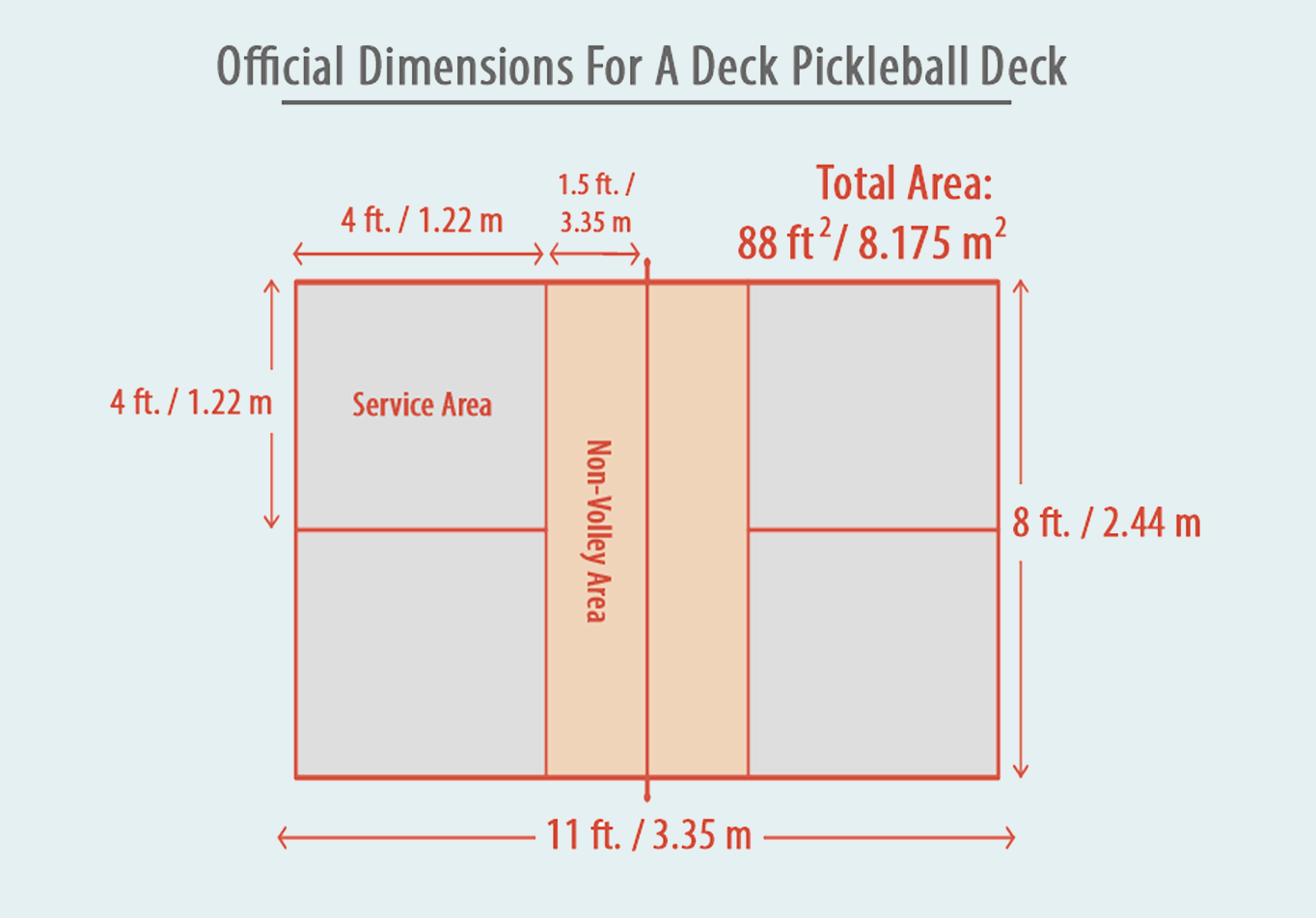Rules
Deck is Deck.
Learn to Play the Game
Deck pickleball is a new and innovative sport, blending elements of pickleball and table tennis to create a unique playing experience. As a new and evolving game, the current rules have been carefully established to ensure fair play and enjoyment for all participants. However, as the sport grows and more players get involved, the rules are subject to refinement and updates. The existing rules are in place to guide gameplay, but adjustments may be made in the future to enhance the experience and meet the needs of the evolving deck pickleball community.
Deck Pickleball Rules and Regulations

1. The Playing Area
- Dimensions: The game is played on an 8 ft x 11 ft deck that sits 20 inches off the ground.
- Net Height: The net is set in the middle of the deck at a height of approximately 10 inches.
- Surface: The deck surface should be smooth and non-slip to ensure safe gameplay.

2. Equipment
- Paddles: Players use smaller pickleball paddles designed specifically for deck pickleball. These paddles are lighter and smaller than standard pickleball paddles but larger than table tennis paddles.
- Ball: A smaller pickleball is used, roughly 55mm in circumference, optimized for play on the smaller deck. The ball should have enough bounce to facilitate dynamic gameplay.

3. Players
- Singles and Doubles: The game can be played with either 2 players (singles) or 4 players (doubles).
- Positioning: Players must start within their respective sides of the deck.

4. Serving
- Starting the Game: A coin toss or other random method determines who serves first.
- Server Position: The server stands behind the baseline, to the right of the center mark, ready to serve into the opponent’s service box on the opposite side of the net (the box diagonally across from the server).
- Serve: Just as in table tennis, the server tosses the ball into the air and hits it before it touches the ground or deck, aiming the deck pickleball first at the server’s side of the deck with the intent of bounce landing it over the net and into the opponent’s service box.
- Service Method: When executed correctly, the serve is performed underhand, with the ball being hit and bounced, landing diagonally across the deck. The server must have both feet behind the deck’s end line when serving, and the ball must also be struck from behind this line.
- Service Rotation: In singles as well as in doubles, each player serves five times (5) consecutively before the serve rotates to the opposing player/team.

5. Scoring
- Rally Scoring: Points can be scored by either the serving or receiving side. A rally ends when one side fails to return the ball legally.
- Winning the Game: Games are typically played to 15 points, and a player/team must win by at least 2 points. Matches can be played as best-of-3 or best-of-5 games.
- Faults: A fault results in a point for the opposing side or loss of serve. Faults include hitting the ball out of bounds, not clearing the net, or double-hitting the ball.

6. Gameplay
- Rallies: Once the ball is served, players alternate hitting the ball over the net. The ball must bounce once on the deck before it can be hit.
- Volleying: Volleys (hitting the ball before it bounces) are allowed only when players are behind the volley line (approximately 1.5 feet from the net).
- Out of Bounds: The ball is considered out of bounds if it lands outside the deck’s perimeter.
- Lets: A serve that touches the net but lands in the correct service box is considered a “let” and is retaken without penalty. However, balls that land in the area between the net and volley line (also called the Non-Volley Zone or “kitchen”) are considered out.

7. Safety
- Safe Play: Players must prioritize safety during gameplay. Any intentional actions that could cause harm are prohibited.
- Timeouts: Each player/team is allowed one 1-minute timeout per game.

8. Etiquette
- Sportsmanship: Players should exhibit good sportsmanship, including honest line calls and respectful communication.
- Disputes: In case of disputes, players can agree to replay the point or seek third-party mediation if available.




